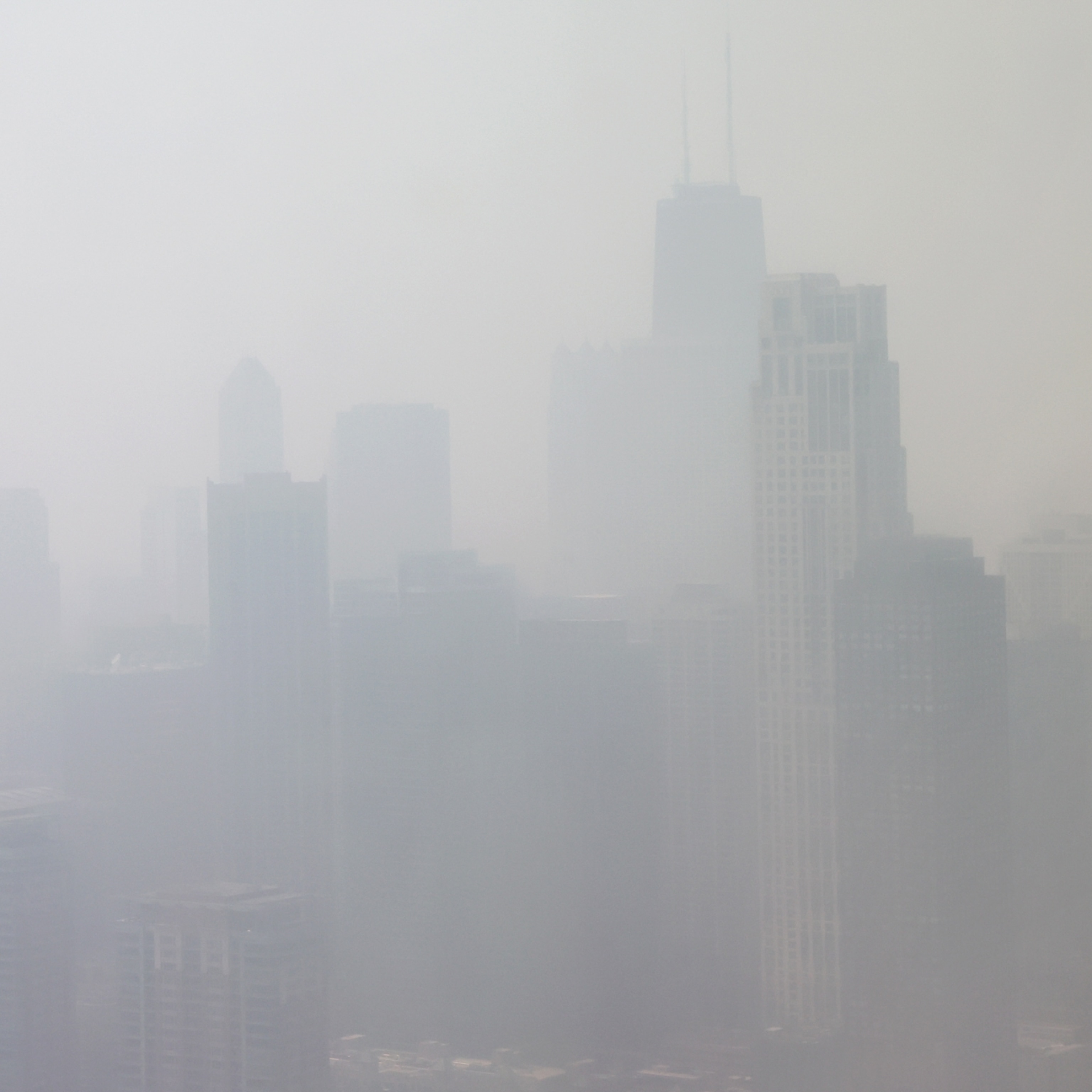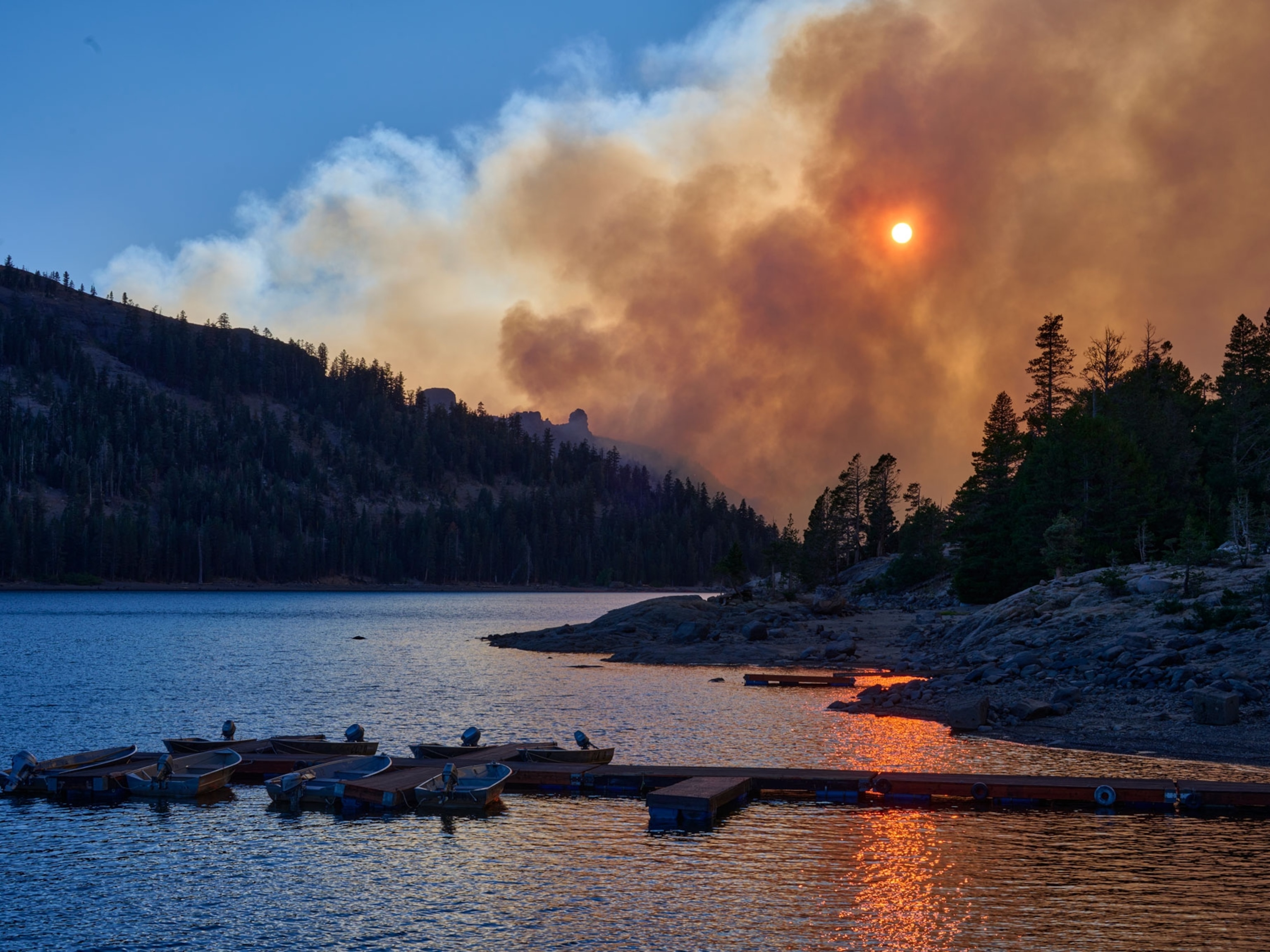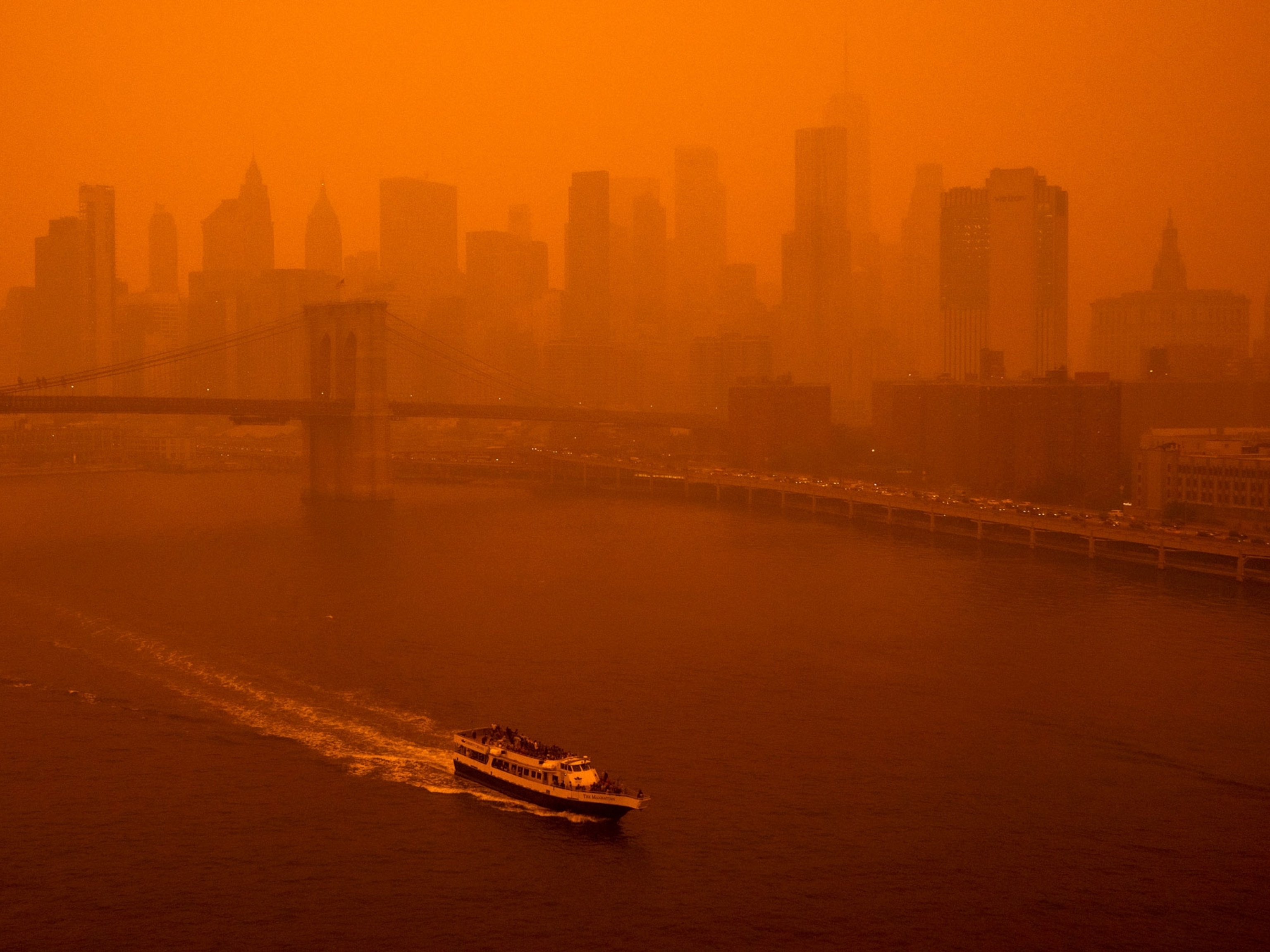
Wildfire smoke is transforming clouds, making rainfall less likely
A new study finds smoke could be making it harder for clouds to drop rain and alleviate drought, potentially kicking of a “very scary” feedback loop.
Over the summer of 2018, the worst wildfire season the western United States had ever seen sent thick plumes of smoke high into the sky. Atmospheric scientist Cynthia Twohy and her colleagues spent weeks flying a giant C-130 research airplane through the smoke, which was so dense that the light inside the plane sometimes went dusk-dim.
“You couldn’t even see the clouds outside, the smoke particles were so thick,” says Twohy, who works for NorthWest Research Associates, a scientist-owned research organization. All that smoke, she thought, must have an impact on the clouds forming above the West’s scorched surface.
It does indeed, according to a study she and her colleagues published recently in Geophysical Research Letters: Smoke particles make some clouds denser and more tightly packed with tiny droplets—a combination that means the water in them is less likely to fall as rain.
The team didn’t directly link the changes in clouds with the ongoing western drought. But the fear is that in the bone-dry, increasingly fire-prone West, a feedback loop like this could make drought, and so fire cycles, worse.
What’s very clear for now, says Twohy, is that “the reason these clouds are the way they are is because of the smoke particles”—and the way they are makes them less likely to produce rain.
More particles, less rain
Clouds form when water vapor in the atmosphere condenses into droplets around tiny particles floating in the air.
But there’s only so much water in the air, especially during summertime over the arid western U.S. If that little bit of water has only a few sticky particles to grab onto, the water will eventually collect on just those few specks, forming big droplets. But if there are lots of little particles available, the water can spread out, forming a glittering kaleidoscope of tiny droplets.
In a smoke plume, there is no shortage of particles. A fire chews up anything in its path and can shoot the detritus high into the atmosphere: dark, charred bits of organic material; gooey particles of tar; brown ash; and much more. The dark particles often glom together into small clusters about 100 nanometers across—about the size of a piece of fine corn starch—which is exactly the right size for forming cloud droplets.
Back in 2018 Twohy and her colleagues collected cloud droplets directly from the air outside the plane. Sure enough, inside the smoke plumes they found droplets that were about five times as numerous and roughly half the size as in clouds without smoke.
In and of itself, that’s not surprising, though scientists hadn’t previously collected droplets from inside a smoke-changed cloud. But its impacts are potentially bad news, because clouds made up of smaller droplets are less likely to rain—the droplets just aren’t heavy enough to fall to the ground, and instead stay floating in the air.
“When the cloud droplets are too small, it sometimes doesn’t rain,” says Jonathan Jiang, an atmospheric scientist at the Jet Propulsion Laboratory in California.
Smoke squelches rain
Scientists have seen evidence of these effects elsewhere—but not by collecting cloud droplets directly from the air, and not over such drought-plagued land as the western U.S. Fires in the Amazon, southern Africa, and Indonesia, for instance, all kick huge plumes of smoke into the atmosphere, and the fine particles do the same thing there as in the western U.S.—grow clouds that are dense with tiny droplets and stingy with their trapped water.
The fires also affect the atmosphere itself. Smoke particles are dark, so they absorb sunlight, warming themselves and the air around them. Meanwhile, the denser clouds they help form are bright, so they reflect a lot of sunlight, which keeps it from warming the ground.
The upshot is that smoke reduces the temperature difference between the warm ground and the cold air higher up. But that temperature difference is what drives the convective updrafts that form storm clouds.
Scientists estimate that those combined effects—the suppressed convection and droplets too small to rain—cut precipitation over smoke-laden parts of central Africa during fire season, potentially kicking off a feedback loop that leads to more fire. The same has happened over Madagascar, which has seen a roughly 20 percent drop in precipitation over the last few decades, in part because of human-induced fires, says Jiang.
In some cases, smoke could do the opposite and intensify precipitation. In parts of the humid Amazon, a complicated set of atmospheric physics means smoke tamps down the lower-level clouds but causes storm clouds to form in the high atmosphere.
But overall, climate models suggest that a smoke-induced drop in rainfall probably happens across much of the planet. What’s concerning, says Jiang, is how all the pieces of the climate change puzzle can push toward worse conditions.
“Think about global warming. Because of the extra heat the wildfires are more frequent. And because they’re more frequent, you get the drier [conditions], which means less precipitation,” he explains.
So the smoke could end up exacerbating the drought and perpetuating its own existence.
A ‘very scary’ feedback loop
Though Twohy and her colleagues didn’t directly link the extra smoke in the air to changes in western rainfall, scientists already know that the West is seeing less rain during fire season than it used to. A 2018 study found that the number of summertime rain days has dropped by about 4 percent per decade since 1979. That has led to an increase in dry vegetation that is ripe for burning.
And in fact the West has seen a large increase in wildfires and smoke over the past two decades. In 2018, nearly twice as much burned material ended up in the atmosphere than the 20th-century average; in 2020, it was higher by nearly a factor of three.
Though not much rain falls during summer across much of the West in the best of years, that rain matters a lot. “Very often, how big a fire gets relates to when the rain comes to put out the fire,” says Charles Luce, a Forest Service researcher at the Rocky Mountain Research Station in Boise, Idaho.
What the new research suggests is that smoke may help tamp down the rains that put fires out or keep them from starting in the first place. No one yet knows how much of an impact this effect might be having in the western U.S—or the world.
But for the West, which is locked in a two-decades-long drought that rivals any in the last 2,000 years and is facing another year of enormous wildfires and choking smoke, the prospect of another exacerbating feedback loop is “a very scary thought,” says Jiang.
Related Topics
You May Also Like
Go Further
Animals
- Orangutan seen using plants to heal wound for first timeOrangutan seen using plants to heal wound for first time
- What La Palma's 'lava tubes' tell us about life on other planetsWhat La Palma's 'lava tubes' tell us about life on other planets
- This fungus turns cicadas into zombies who procreate—then dieThis fungus turns cicadas into zombies who procreate—then die
- How can we protect grizzlies from their biggest threat—trains?How can we protect grizzlies from their biggest threat—trains?
Environment
- What the Aral Sea might teach us about life after disasterWhat the Aral Sea might teach us about life after disaster
- What La Palma's 'lava tubes' tell us about life on other planetsWhat La Palma's 'lava tubes' tell us about life on other planets
- How fungi form ‘fairy rings’ and inspire superstitionsHow fungi form ‘fairy rings’ and inspire superstitions
- Your favorite foods may not taste the same in the future. Here's why.Your favorite foods may not taste the same in the future. Here's why.
- Are the Great Lakes the key to solving America’s emissions conundrum?Are the Great Lakes the key to solving America’s emissions conundrum?
- The world’s historic sites face climate change. Can Petra lead the way?The world’s historic sites face climate change. Can Petra lead the way?
History & Culture
- A short history of the Met Gala and its iconic looksA short history of the Met Gala and its iconic looks
- Meet the ruthless king who unified the Kingdom of Hawai'iMeet the ruthless king who unified the Kingdom of Hawai'i
- Hawaii's Lei Day is about so much more than flowersHawaii's Lei Day is about so much more than flowers
- When treasure hunters find artifacts, who gets to keep them?When treasure hunters find artifacts, who gets to keep them?
Science
- Why ovaries are so crucial to women’s health and longevityWhy ovaries are so crucial to women’s health and longevity
- Orangutan seen using plants to heal wound for first timeOrangutan seen using plants to heal wound for first time
Travel
- Why this unlikely UK destination should be on your radarWhy this unlikely UK destination should be on your radar
- A slow journey around the islands of southern VietnamA slow journey around the islands of southern Vietnam
- Is it possible to climb Mount Everest responsibly?Is it possible to climb Mount Everest responsibly?







